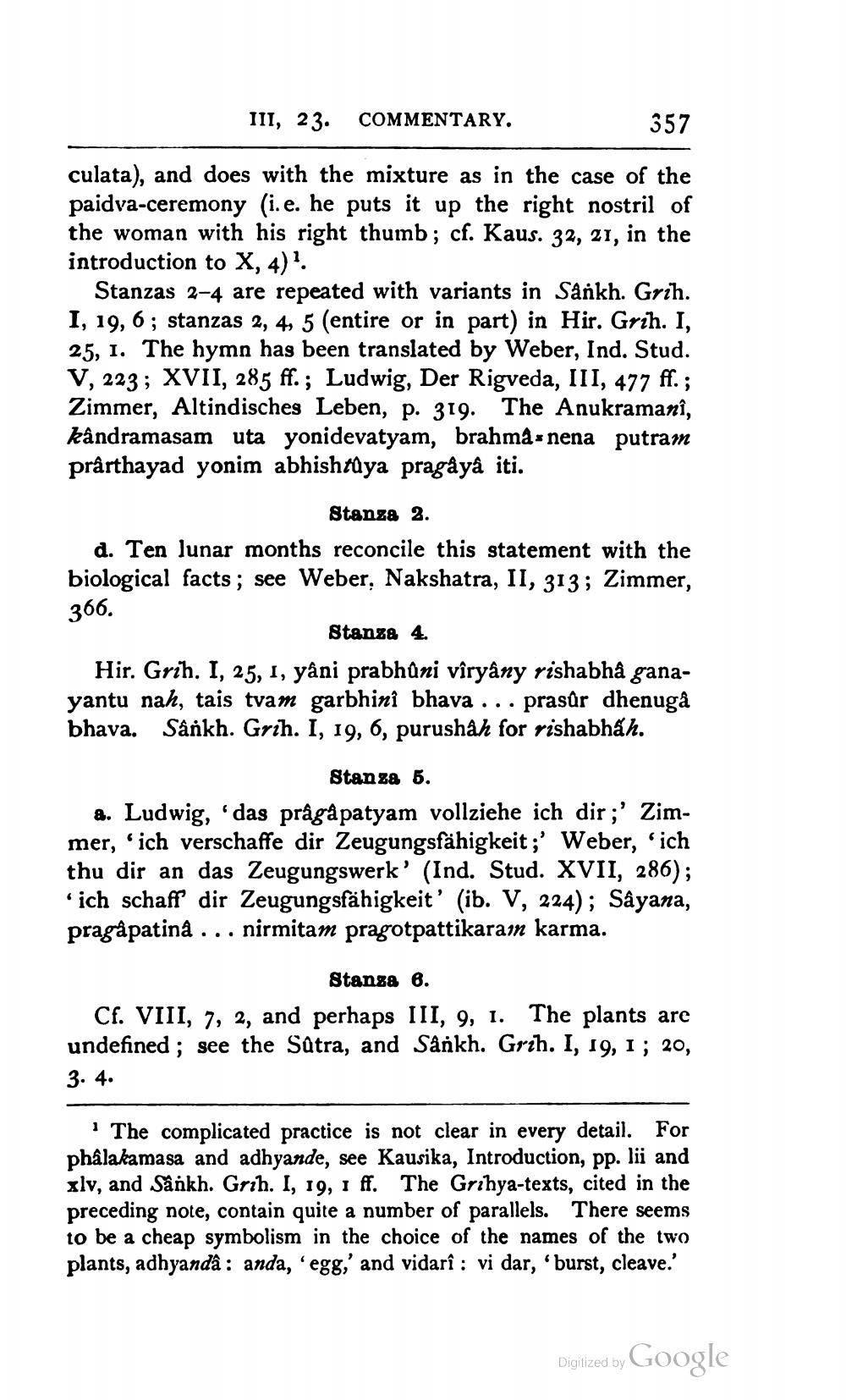________________
III, 23. COMMENTARY.
357
culata), and does with the mixture as in the case of the paidva-ceremony (i.e. he puts it up the right nostril of the woman with his right thumb; cf. Kaus. 32, 21, in the introduction to X, 4)'.
Stanzas 2-4 are repeated with variants in Sankh. Grih. I, 19, 6; stanzas 2, 4, 5 (entire or in part) in Hir. Grih. I, 25, 1. The hymn has been translated by Weber, Ind. Stud. V, 223; XVII, 285 ff.; Ludwig, Der Rigveda, III, 477 ff.; Zimmer, Altindisches Leben, p. 319. The Anukramanî, kândramasam uta yonidevatyam, brahma- nena putram prarthayad yonim abhishtùya pragåyå iti.
Stanza 2. d. Ten lunar months reconcile this statement with the biological facts; see Weber, Nakshatra, II, 313; Zimmer, 366.
Stanze 4. Hir. Grih. I, 25, 1, yâni prabhuni vîryany rishabhå ganayantu nah, tais tvam garbhini bhava ... prasûr dhenugå bhava. Särkh. Grih. I, 19, 6, purushah for rishabhah.
Stan za 5. 2. Ludwig, 'das praga patyam vollziehe ich dir ;' Zimmer, 'ich verschaffe dir Zeugungsfähigkeit;' Weber, 'ich thu dir an das Zeugungswerk' (Ind. Stud. XVII, 286); 'ich schaff dir Zeugungsfähigkeit' (ib. V, 224); Sâyana, pragàpatina ... nirmitam pragotpattikarain karma.
Stansa 6. Cf. VIII, 7, 2, and perhaps III, 9, 1. The plants are undefined ; see the Satra, and Sårkh. Grih. I, 19, 1; 20, 3. 4.
The complicated practice is not clear in every detail. For phâlakamasa and adhyande, see Kausika, Introduction, pp. lii and xlv, and Sänkh. Grih. I, 19, 1 ff. The Grihya-texts, cited in the preceding note, contain quite a number of parallels. There seems to be a cheap symbolism in the choice of the names of the two plants, adhyandâ : anda, “egg,' and vidarî : vi dar, 'burst, cleave.'
Digitized by Google




